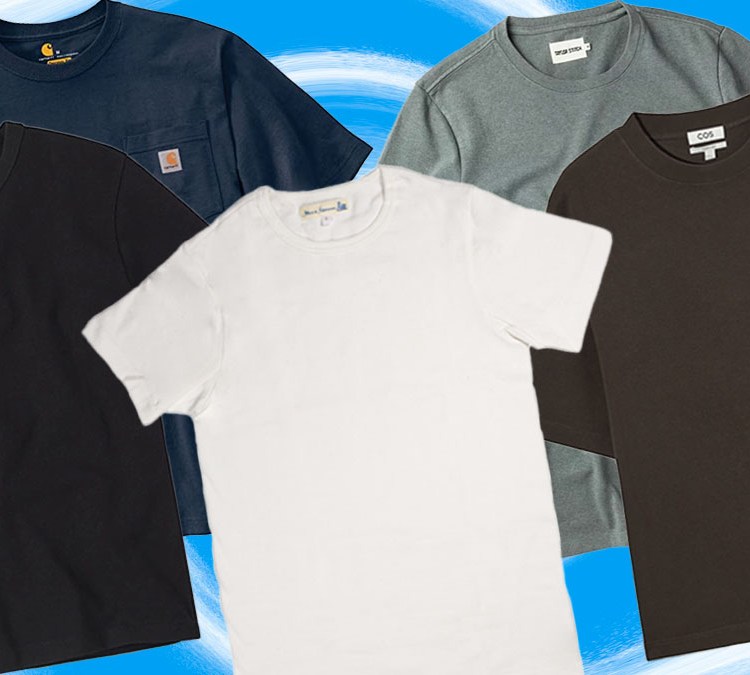We regret to inform you that cologne has been canceled.
Don’t worry, fragrance is still alive and well. The only thing going away are the limiting boundaries that have traditionally distinguished men’s cologne from other perfumes. Sure, certain icons, like Chanel No. 5 or Ralph Lauren’s green bottle of Polo Cologne, might always be marketed towards one gender or another, but what is considered acceptable for one person to spray on their wrists and then dab on the back of their neck (didn’t anybody teach you how to do this the correct way?) is changing. And we’re all the better for it.
From the 2018 relaunch of Calvin Klein’s iconic 1994 unisex fragrance CK One to Louis Vuitton’s new trio of breezy California scents — the brand’s first ever gender neutral line — it’s clear that the fragance world is increasingly moving beyond a gendered framework. From indie up-and-comers to the big names, the men’s fragrance world is breaking with tradition, introducing wafts of white rose and hints of fresh fruit into a product long dominated by musky leathers and sandalwood.
“Most niche brands are ungendered,” says David Moltz of D.S. & Durga, a Brooklyn-based perfume house. According to Moltz, gender is “barely discussed” in the niche world. “It’s a moot point to say ‘this is for women or men,’” he tells InsideHook. “We understand fragrance lovers wear what they want.”
While the recent popularity of unisex fragrances may seem like a new trend to many mainstream shoppers, a genderless approach to scent has been on the rise for quite some time. Back in 2006, The New York Times was already drawing attention to a new, “increasingly male” generation of fragrance lovers “who thumb a nose at artificial gender distinctions.”
“I decided a long time ago I would buy and wear what I like to smell,” one such fragrance lover, tenor Trevor Mitchell, told The Times’ Ruth La Ferla. “It has nothing to do with gender, sexuality or any of that.”
A full twelve years before that, Calvin Klein’s CK One broke onto the scene as one of the first unisex fragrances to achieve massive mainstream popularity, well before gender fluidity as we think of it today became a household concept.
And that’s just in recent memory. While a gendered approach to fragrance may be thought of as “traditional,” it’s actually a relatively modern idea in the grand scheme of scent. “Gendered fragrance is largely a twentieth-century phenomenon,” perfume critic and biophysicist Luca Turin tells InsideHook. The author of Perfumes: The Guides, Turin credits the rise of gendered perfume to late nineteenth-century strides in chemistry that broadened perfumers’ palettes by opening up a greater diversity of aromachemicals.
While modern advertising for men’s fragrance tends to lean heavily into traditional notions and signals of masculinity, from muted bottles and packaging to black and white TV ads with a hefty dose of sex appeal, scent originated as a status symbol well before it adopted any gender connotations.
“Historically, fragrance was related to class, not gender,” explains Rachel Herz, PhD, a neuroscientist at Brown University and Boston College and author of The Scent of Desire. “Perfumery flourished in France and Italy during the renaissance, but it was men in the European courts wore fragrance, women did not, and perfumes varied by rank,” she tells InsideHook. When women caught onto the trend, “there wasn’t much distinction between male and female fragrances.”
Not only is the distinction between men’s cologne and women’s perfume relatively modern, it’s also something of a misnomer. As Turin notes, the use of “cologne” as an umbrella term for men’s fragrance is strictly an Americanism. Eau de cologne, like eau de toilette and eau de parfum, is merely a category of fragrance distinguished by concentration of perfume oil, not gender. “Eau de Cologne was originally a citrus fragrance made in Köln, Germany, known in French as Cologne, with a low concentration of perfume oil,” explains Turin. Most of your go-to “colognes” — think big names like Armani Code and Paco Rabanne 1 Million — are probably eaux de toilette.

If perfume was first about class and then about gender, it would seem that 21st century fragrance has come to be defined, in true postmodern fashion, by the individual. For today’s modern fragrance enthusiasts, a gendered framework can feel unnecessarily limiting.
“People are way less likely to only buy fragrance marketed toward a specific gender, and I think feel freer to just wear whatever smells right to them as an individual,” says writer Helena Fitzgerald, co-founder of the fragrance newsletter The Dry Down. The increasing desire among modern consumers to snag a spritz from the other end of the perfume counter may have less to do with subverting the gender binary than it does with simply embracing a wider variety of fragrances.
This same mentality may also be contributing to the decline of the “signature scent,” which Fitzgerald suggests is becoming “a thing of the past,” adding that “younger people and people recently getting interested in fragrance seem much more likely to try out a bunch of perfumes and cycle through different scents like lipstick, depending on the day, rather than trying to find one that they wear for their whole life.”
Unsure of how to navigate the changing landscape of the fragrance world? When in doubt, follow your nose — or, as Moltz suggests, your gut.
The perfumer advises those new to genderless fragrance simply “go with their gut” and try a variety of fragrances on the skin. He also suggests starting with niche brands, many of which are genderless and may make a customer feel more comfortable branching out into unfamiliar territory.
“The best advice is to experiment,” echoes Herz. “Sniff and spritz a bunch of different fragrances and discover what you like.”
If you’re looking for somewhere to begin, Fitzgerald points to rose scents as a growing trend among men, one that some perfumers have identified as a historically male fragrance to begin with. “I think florals in particular are where we’re seeing notions of ‘feminine’ scents get thrown out the window,” she says, adding that heavy white florals such as jasmine are also seeing an increase in popularity among men.
Alternately, while the “signature scent” may be on the decline, customized fragrance is becoming increasingly popular. “People want fragrances to speak to their individuality, not for everyone to smell the same,” says Herz, who recommends visiting a fragrance boutique where a perfumer can help you craft a unique, individualized scent. More adventurous perfume enthusiasts may also consider mixing existing commercial fragrances or hitting up the Demeter Fragrance Library for a little DIY perfume blending.
Even as attitudes surrounding scent begin to shift toward a more open, individualized approach, the golden rule of fragrance still stands: Less is more. “Tone it right down to a whisper,” says Turin, who suggests men then “turn the volume back up ever so slowly” once they’ve found a scent they like.
Fitzgerald advises perfume wearers to treat their fragrance as something of a secret, only revealed to those close to them. “Anyone who could smell your perfume is someone who decided to get close enough to you that they can smell whatever your natural body odor is, too,” she says. “That’s the magic of fragrance — it’s something that appears along with intimacy (of whatever kind) with another person, and links to that memory, whether a mother saying goodnight to her kids, or a kiss with a new or familiar partner, or a comforting embrace from a friend.”
Cologne may be cancelled, but you can rest assured the future is fragrant.
This article was featured in the InsideHook newsletter. Sign up now.


















